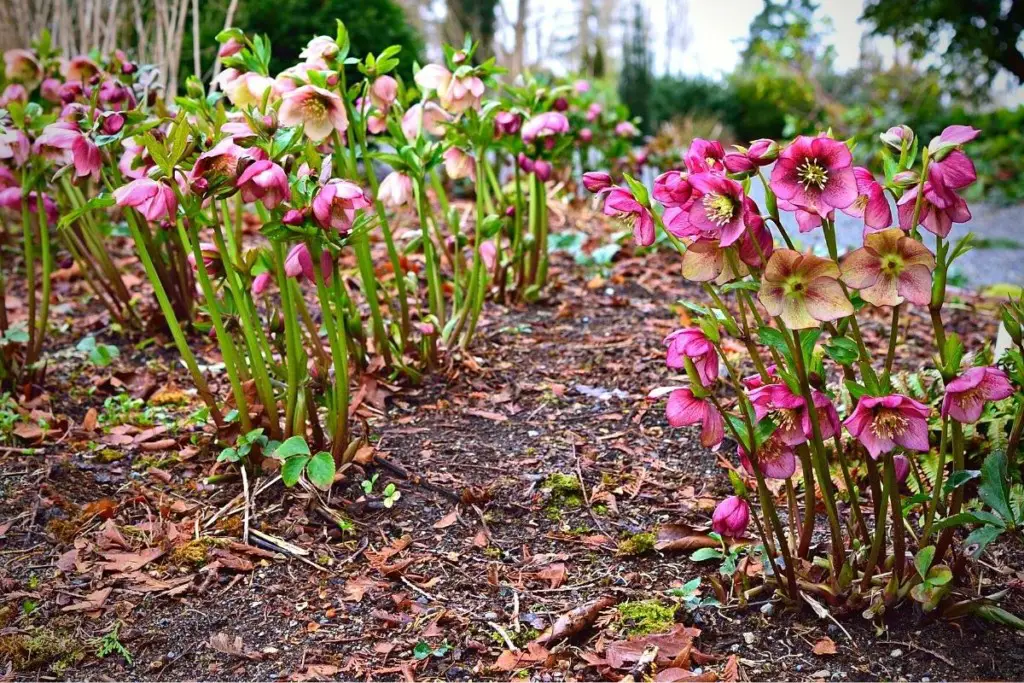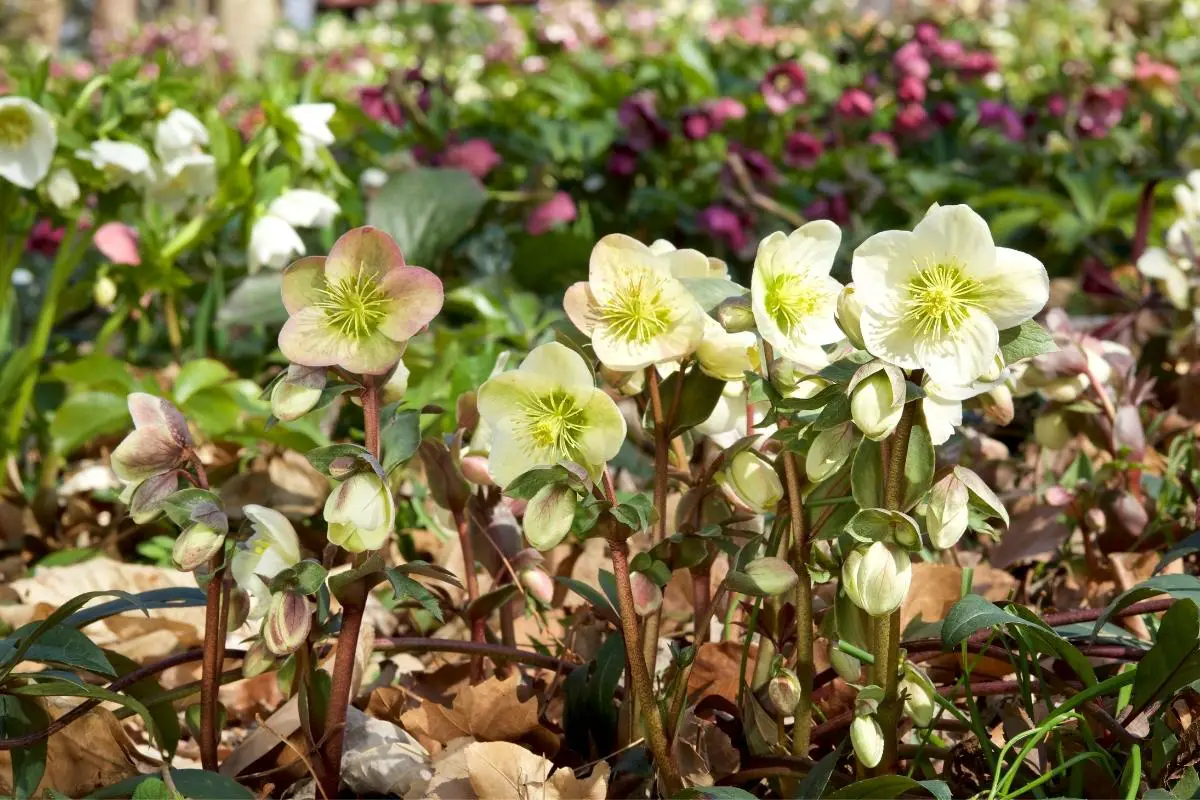You might be wondering exactly how common it is for Hellebores to spread. The truth is that it is very easy for them to multiply and spread. We will take a closer look at why they can easily spread and what you can do to manage their expansion. We’ll also take a look at some of the other factors, including the amount of time that it takes for Hellebores to spread from start to finish.
Yes, Hellebore does spread. Since Hellebores varieties, like the ‘Lenten rose’, can reseed and spread by themselves, they don’t need a whole lot of maintenance to get this process started. They just need a safe region with a sufficient amount of time to complete the process of spreading to a new area.
It can be difficult to understand the concept of spreading and understanding the lengthy process of hellebores reseeding itself to expand its reach. You’ll have the opportunity to learn more about this process as you continue reading because we are going to explore the step-by-step process of a hellebore’s development to spread.
Table of Contents
Hellebore Spreading
Hellebores will commonly spread out between one to three feet depending on the specific plant. They can multiply up to nearly a dozen divided plants and they need to be maintained immediately so that they don’t dry out and suffer.
It’s common for Hellebores to spread quite rapidly in some situations because they pour Hellebore sprouts onto the ground, which are the key to the entire spreading process. You should not try to transplant these or try to divide them, once the root system is established. They do not like being moved. Source.
Also known as ‘Lenten Rose’ or ‘Christmas Rose’, these unique and vibrant Hellebores have a reputation for being quite sustainable and resilient across multiple climates and regions. There’s almost no doubt that they will flourish with even a minor amount of maintenance and average climate conditions.
See our article for Christmas Rose here.
Hellebore Maintenance Requirements
Drainage may be the most important factor if you are planning to plant Hellebores. A well-covered position with a reasonable amount of shade is relatively important, but there also needs to be enough sunlight throughout the day.
Cutting back Hellebores during the autumn can be important too. November or December is a common time for this process, mainly because it gives you the best opportunity to remove the old leaves.
It also helps to plant Hellebores near companion plants. Some of the most common companion plants include daffodils and snowdrops, although the ‘bleeding heart’ is also an excellent choice. Without proper maintenance, the entire process could fall apart. Which could ultimately make your goal of growing healthy Hellebores much more difficult.
The convenient thing about Hellebores is that they can successfully manage many different sunlight conditions. They generally prefer a small amount of shade, but can also effectively survive in full sun and full shade conditions.
This does have an impact on the effectiveness of their spread, which is something to keep a note of when handling these delicate plants. The wide threshold allows these plants to prosper tenaciously regardless of how much sunlight they are receiving.
Want to learn more about perennials? See our article for Do Perennials Come Back Every Year

Hellebores Growth Pattern
Hellebores generally take between two to three years to reach their full mature growth when starting from just a seed. With appropriate spacing, they will eventually develop into a fully-grown plant with reliable root structures that will help them survive independently.
Since they are capable of spreading and multiplying on their own, there is no need for human interaction to start this process, although you may interfere in certain situations to reach your desired goals. They’ll need well-drained soil and moderate amounts of water to reach their full potential. After two to three years of development, this process will be completed until it eventually starts over again.
As they spread and multiply, you can expect Hellebores to bloom in the later months of winter through the early springtime. Since they are native to Europe and China, regions adjacent to these locations are probably best-suited for their growth, although they can be grown just about anywhere where the conditions are within the acceptable threshold.
Hellebores Ideal Climate and Temperature for Spreading
For the best possible potential, Hellebores need to be in temperatures between 40 degrees Fahrenheit and 70 degrees Fahrenheit. Cooler temperatures are helpful because they can help support the structure of root growth in these types of plants.
While they can survive in many types of soils, well-drained soil is going to be much more beneficial to Hellebore plants. Spreading is a natural activity that can take place when dealing with Hellebores. Because of this, there’s not a whole lot that you can do to stop it once the sprouts are dispersed.
After a sufficient amount of time, this process will result in new growths of these marvelous plants. Especially in regions where the conditions are optimal for high levels of prosperity and growth.
Are Hellebores Invasive?
Since Hellebores can spread, many people wonder if it is considered an invasive plant. As long as you keep up with the spreading, this perennial plant is not considered invasive. It will not spread with enough force to take over other well-established plants.
The root system of hellebores is not aggressive enough to take over the root systems of other plants. Even if you let them go for a long period, and they spread on their own, the root systems will not spread far enough.
Do Hellebores Self Seed?
Yes, hellebores will self-sow. These flowers will drop seeds, that will come back the next year. Sometimes the wind will pick up seeds and spread them into different areas. Because Hellebore self-seeds, it makes it an easy to care for perennial, which will give you lots of flowers for years to come.
You can harvest these seeds by watching for the pods to become hollow. Before they drop, and once they start to rattle around, you can collect the seeds from the pods. You can then store them away, or plant them in other parts of your yard or garden.
Related Questions
How long does it take for Hellebores to reach full maturity?
The amount of time depends on how ideal the local conditions are. In ideal conditions, two years would be a sufficient target. In conditions that are not ideal, it could take up to three years for the process to be completed. Ensuring that conditions are as optimal as possible will give you the quickest time frame when growing and spreading Hellebores.
How do Hellebores spread on their own?
They spread by dropping small Hellebore sprouts onto the surface below. The multi-year process towards maturity then kicks into gear, until the seed eventually develops into the next generation.

